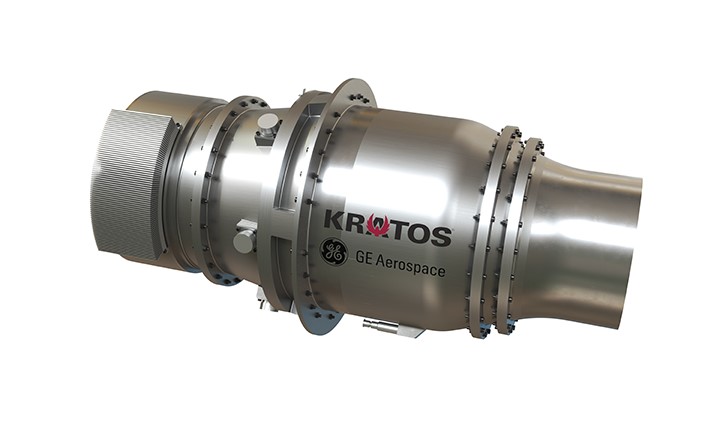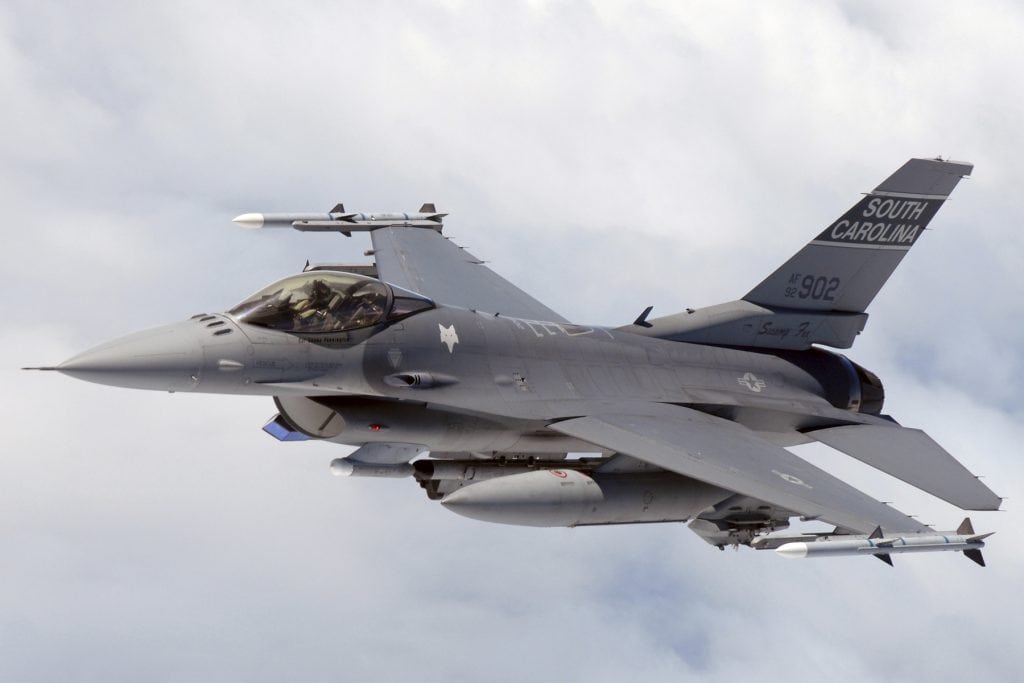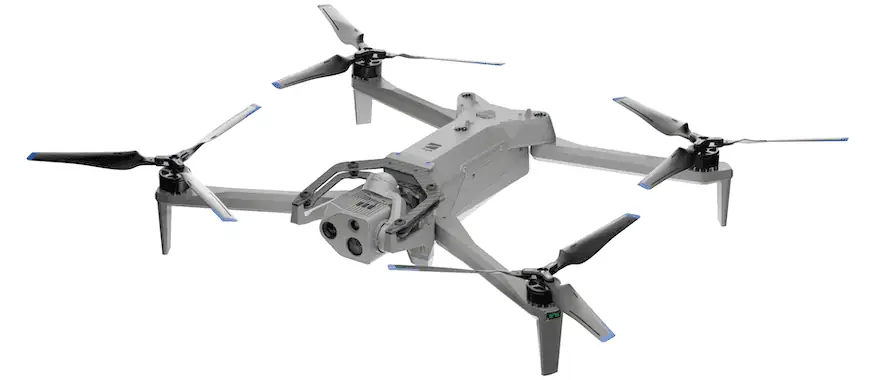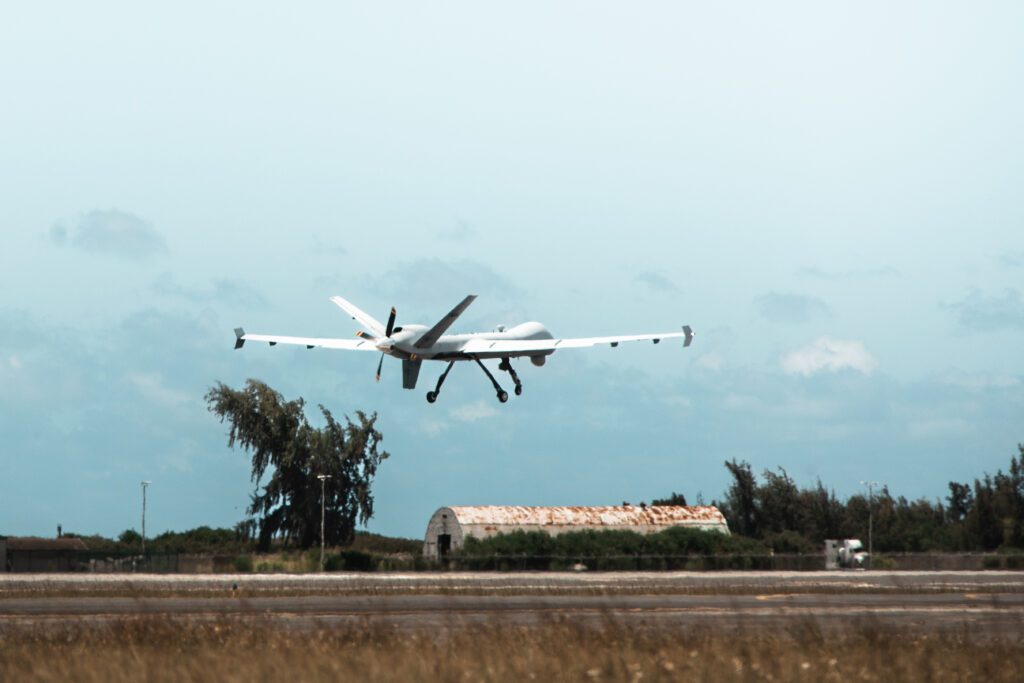
Sikorsky plans to have the power systems tested for its hybrid-electric vertical takeoff and landing (HEX VTOL) demonstrator aircraft ready by year’s end to begin ground runs in 2025, citing it as a key marker in its pursuit to develop a family of hybrid-electric platforms.
Igor Cherepinsky, director of Sikorsky Innovations, told reporters the company is working on a preliminary design review for the actual HEX VTOL follow-on demonstrator, with plans to eventually build two airframes.
“[The testbed] also serves as our lab, so we’ll certainly power it on. What happens after we power it on depends on our findings as we’re going pretty fast,” Cherepinsky said. “This is our first foray into a really high-powered hybrid [electric] system, so we’re going to take it as fast as possible without doing anything silly.”
In February, Sikorsky detailed its HEX VTOL demonstrator, which includes a tilt-wing configuration for potential commercial and military applications, and that it had partnered with GE Aerospace to integrate a 1.2 megawatt-class turbogenerator into the platform.
Sikorsky said at the time that the HEX VTOL demonstrator is intended to have an operating range of at least 500 nautical miles and 9,000-pound maximum gross weight, and would utilize the company’s MATRIX autonomy software.
Work with the HEX VTOL power systems testbed will begin at Sikorsky’s headquarters in Stratford, Connecticut before transitioning to the company’s facility in West Palm Beach, Florida, Cherepinsky noted, with plans to conduct ground runs and eventual hover testing on the testbed by mid to late 2025.
Cherepinsky told reporters work to build the two HEX VTOL airframes is following the testbed by “about to six to eight months,” and that timing of when first flights could occur will be informed by findings with the power systems testbed.
“Design on the actual air vehicle is proceeding. We are approaching the [preliminary design review] for the vehicle. And because we are Sikorsky Innovations we have started making some parts for the air vehicle,” Cherepinsky said. “So this becomes essentially a game of when have I demonstrated the powertrain that I’m comfortable to put in in a not inexpensive 9,000-pound air vehicle and go fly that.”
In a media briefing ahead of this week’s Farnborough International Airshow in England, Cherepinsky detailed Sikorsky Innovations exploration of multiple efforts in pursuit of a hybrid-electric VTOL family of systems.
“How do we deliver these products to our customers faster and cheaper? Part of the way of doing that really is to make sure that we have a common set of subsystems, and really subsystems, that we can develop and use in these different looking aircraft,” Cherepinsky said.
The HEX VTOL tilt-wing demonstrator is one of four hybrid-electric concepts Sikorsky is pursuing, which also includes a larger version of the HEX VTOL platform that has gone through a conceptual design and a new rotor blown wing unmanned aircraft system.
“[The rotor blown wing] simply implies that we’re using a blowing effect from the rotors to do interesting things with wing interaction. It’s a tail-sitter. It’s designed for a variety of missions. It’s really meant to be a cost-effective way of providing VTOL UAS to a wide range of customers,” Cherepinsky said.
Sikorsky is developing a version of its rotor blown wing UAS concept for DARPA’s Advanced Aircraft Infrastructure-Less Launch and Recovery program, also known as Ancillary, with the DoD agency having recently selected it as one of six companies to continue onto the risk reduction and component testing phase.
The fourth concept is a hybrid-electric, single main rotor helicopter, which Cherepinsky said is currently in a conceptual design stage.
“It’s ultra efficient, ultra cost efficient and also hybrid electric. It has a very nice blend between batteries, conventional turbine [engines] and other means of producing power to generate a very low cost per flight hour machine that is also eco-friendly,” Cherepinsky said. “Stay tuned for when and how we intend to proceed with it.”
Cherepinsky did add that Sikorsky is thinking about both a clean-sheet design for a hybrid-electric helicopter and potentially pursuing retrofit kits “further out in the future.”
“We are actively studying all of that. I’m obviously being careful not to reveal things we are not ready to talk about yet,” Cherepinsky told reporters. “This is what we’re aiming for with our next product cycle. I can say that. So don’t expect us to talk about this for decades. Expect to hear from us in the year [with] a more concrete commitment to something or the other.”
The Army last week published a Request for Information detailing extensive plans for evaluating hybrid-electric VTOL platforms and enabling technologies, with an aim to hold capability demonstrations between fiscal years 2026 and 2030.
Cherepinsky detailed Sikorsky’s decision to focus on hybrid-electric over pursuing fully-electric platforms, noting the HEX design allows it to be “very upgradeable” to “whatever might come next” in battery technology.
“If you look at the vehicles that interest us, they are north of 10,000 pounds. Being purely electric for that size isn’t practical yet. I will never say that it will never be practical, right, because never say never. In this kind of tech [space] with batteries there are things that are coming out that might make it possible,” Cherepinsky said. “But to be pragmatic and to be able to develop electrified aircraft architectures we said we’re going to be agnostic to the source of the electric power, which today implies that the best thing to do is to take a turbine [engine] and convert all the power to electricity.”
Cherepinsky added that hybrid-electric platforms are likely to burn sustainable aviation fuels “much more efficiently” than conventionally-powered aircraft.
“We are very [aware] of the fact that aviation does produce carbon emissions and we are certainly looking at how do we offset that while still continuing to provide a valuable service,” Cherepinsky said. “The neat part about that is being environmentally conscious is actually good for business. As we produce vehicles that consume less fuel to start with and eventually are eventually convertible to zero emission vehicles, it’s all good news because the cost per mile drops.”
A version of this story originally appeared in affiliate publication Defense Daily.
The post Sikorsky Nears Testbed For HEX VTOL Demonstrator, Pursuing Several Hybrid Electric Concepts appeared first on Avionics International.
—————
Boost Internet Speed–
Free Business Hosting–
Free Email Account–
Dropcatch–
Free Secure Email–
Secure Email–
Cheap VOIP Calls–
Free Hosting–
Boost Inflight Wifi–
Premium Domains–
Free Domains













